Trading Lessons From the DOGZ Bounce: Key Takeaways
- Trading a bounce starts with pattern recognition (3 DOGZ charts included here).
- It’s better to stick to your plan even if it means missing a trade. See lessons #2 and #3.
- Trading rules transcend markets. Heed lesson #5 well…
Click below to…
Join the Trading Community With 20+ 7-Figure Traders
Table of Contents
- 1 7 Lessons from an Awesome 64%+ Bouncer
- 1.1 Trading Lesson #1: Recognize the Pattern
- 1.2 Trading Lesson #2: Respect Your Trade Thesis
- 1.3 Trading Lesson #3: Stay Disciplined
- 1.4 Trading Lesson #4: Take Profits Into Strength
- 1.5 Trading Lesson #5: Trading Rules Are NOT Optional
- 1.6 Trading Lesson #6: Focus On the Right Setups
- 1.7 Trading Lesson #7: The More You See It…
- 1.8 Bonus Trading Lesson: Use the Right Tools
- 1.9 Click Here to Apply for the Trading Challenge
7 Lessons from an Awesome 64%+ Bouncer
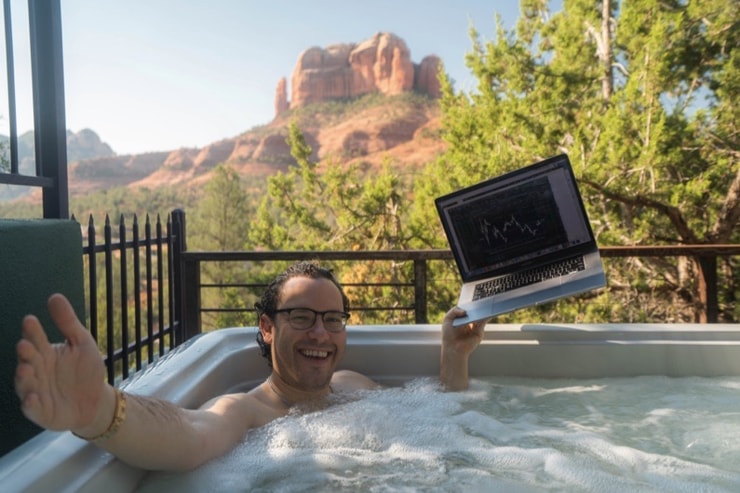
2025 Millionaire Media, LLCOn January 7, Dogness (International) Corporation (NASDAQ: DOGZ) had a 64% bounce in 47 minutes. It’s good to learn from action like this while the chart’s fresh.
Many of the best trades right now are quick, especially near the market open. I didn’t trade this one — lesson #2 explains why. Let’s get straight into it.
Trading Lesson #1: Recognize the Pattern
It’s always easier to see the pattern in hindsight. But that’s part of the learning process. So first, here’s the DOGZ intraday chart from January 7…
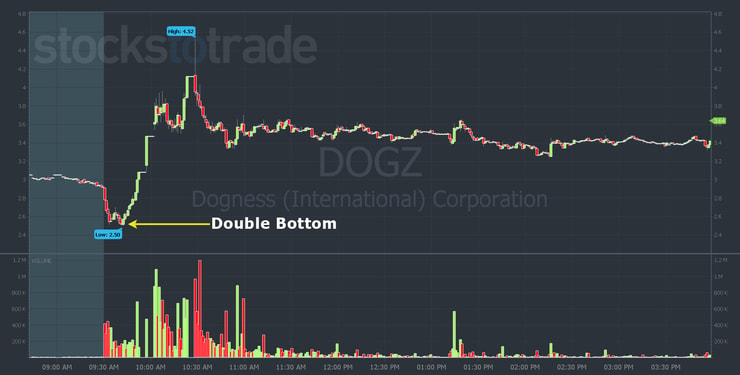
As you can see, DOGZ had a small morning panic. Then it had a perfect double bottom before bouncing 64%. (It top ticked 80% off the low of the day, but only for a few seconds.)
Learn to recognize the pattern — in this case, the double bottom. I usually miss out on double bottoms when my thesis doesn’t match the price action.
But there’s another pattern lesson. Check out the DOGZ two-day chart from January 6–7…
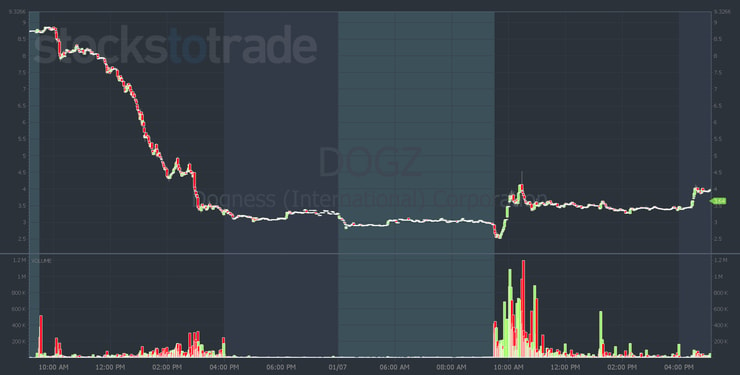
You can see how DOGZ had a huge dump with several fakeout bounce attempts on January 6. That frustrated a lot of traders — including me with a $360 win, a $550 loss, and a $550 win.
Understand the overall pattern. The morning panic wasn’t big. I thought it would go further. That said, I don’t like buying afternoon dips, so I was reluctant to go big on January 6 in the afternoon.
But when a stock that’s up a lot fades and closes weakly, it can lead to a morning panic the next day.
That brings me to…
Trading Lesson #2: Respect Your Trade Thesis

2025 Millionaire Media, LLCA lot of students wondered why I didn’t dip buy since I was commenting in chat…
01/07 9:35:47 AM: More $DOGZ panic, the bigger the better for any potential bounce today
Why didn’t I buy it? I was looking for max panic, and we didn’t get it. Just before the double bottom, I commented…
01/07 9:38:21 AM: C’mon under $2.50 $DOGZ lure in all those early dip buyers
01/07 9:41:30 AM: $DOGZ so close to cracking, c’monnnnn
So I called it pretty well in chat. But it didn’t fit my thesis. If it had broken $2.50, I think it would have set off stop losses leading to max panic. If it had dropped to the $2.30s, I was prepared to take 100,000 shares.
DOGZ didn’t crack $2.50. Did I miss a big opportunity? Yes, but I have zero regrets. This goes back to my retired trader mindset. It’s a good reminder…
More Breaking News
- Orthocell’s Stock Surge: What’s Driving it?
- Mustang Bio’s Shares Skyrocket as FDA Grants Orphan Drug Designation
- CIFR Stock’s Unexpected Surge: A Deep Dive
Trading Lesson #3: Stay Disciplined

2025 Millionaire Media, LLCI didn’t know it was gonna double bottom at $2.50. But I did NOT want to buy just anything. You shouldn’t want to trade.
If the stock had done what I wanted, I would’ve come out of retirement. Have the mindset that you don’t want to trade and wait for a stock to do exactly what you want. In the long run, you’ll do better.
I could have changed my thesis and bought it when it started bouncing. The problem with that is that once you start compromising it’s easy to create bad habits. Stay disciplined.
Since I missed DOGZ, I used it as an opportunity to learn and teach. And one lesson that stands out is…
Trading Lesson #4: Take Profits Into Strength
Everyone who rode DOGZ up in November and December got absolutely clobbered. Check out the DOGZ six-month chart…
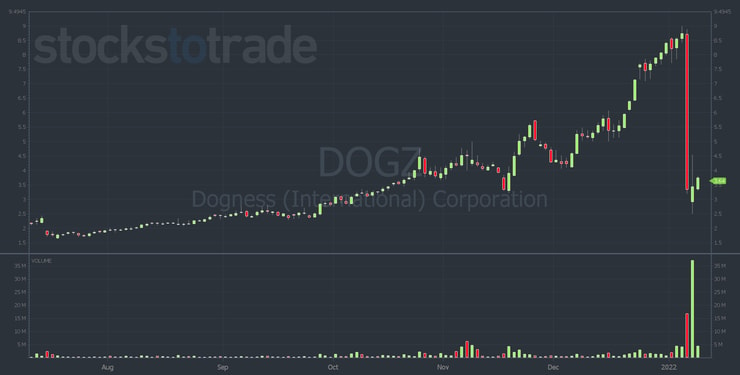
This is just another example of what can happen if you don’t take profits into strength. Don’t follow the herd. The DOGZ chart is a lot like bitcoin and so many other speculative assets.
This is what can happen in one day. And nobody is sure of anything.
A lot of dumb, arrogant, naive newbies don’t realize the risks they take. And it’s not just penny stocks. People get offended when I say to sell into strength. I’ve been warning about it for months…
To be fair, I underestimated bitcoin and a lot of plays. I underestimated how stimulus-check-funded accounts would prop up all these markets.
But … no more stimulus checks. And THAT leads to…
Trading Lesson #5: Trading Rules Are NOT Optional
It’s not optional whether you should cut losses quickly or take profits into strength. These are trading rules for all markets.
Top tip: You don’t even have to tell your Discord chat or Reddit thread where everyone will label you a traitor.
I got some sad messages from people who’d been in DOGZ for weeks. They didn’t take profits. Then … “I’m down, what do I do?”
You already broke your trading plan. I don’t know what to tell you after the fact. That’s why I try to warn people ahead of time. Next time you see this pattern, remember this post. Trading rules are NOT optional.
The good news? Several Trading Challenge students traded DOGZ and did well. It didn’t matter that I missed it. Why? Because they’ve become self-sufficient by following the next lesson…
Trading Lesson #6: Focus On the Right Setups

2025 Millionaire Media, LLCTrading Challenge mentor Mark Croock nailed the dip buy on DOGZ. (Mark uploads his trades to his Profit.ly page in bulk, so I can’t show you his exact trade.) But here are his comments in the Trading Challenge chat…
09:46 AM markcroock: long 7500 DOGZ 2.68
09:51 AM markcroock: all out 2.96
09:56 AM markcroock → timothysykes: thanks for continuing to mention DOGZ doubt i would have traded it otherwise
The point is that when you have a stock making a 50%+ bounce inside of an hour, you really need to focus on these kinds of setups.
Again, it wasn’t just Mark, there were more. They were able to capitalize because of…
Trading Lesson #7: The More You See It…

2025 Millionaire Media, LLCLike anything worthwhile, successful trading requires experience. You need to see the patterns again and again.
There was a lot of “the markets are boring…” on social media that day. I don’t know what other people are looking at.
Trading Challenge students who traded DOGZ had seen (and studied) the pattern before. They’d watched volatility halts before and had some understanding of possible outcomes. And they knew to pay attention to key levels.
Take Croock’s trade, for example. His risk was $2.50 — a key psychological level and the low of the day. He was out at $2.96 when the stock approached another key level.
Did he leave money on the table? Yes. But he had a clean trade with clear risk and a solid trading plan.
Bonus Trading Lesson: Use the Right Tools

2025 Millionaire Media, LLCPeople who aren’t Trading Challenge members often DM me and ask where they can find these kinds of plays. It’s simple…
Use StocksToTrade
Yes, there are other scanners out there. I’m partial to StocksToTrade. (Yep, I’m an investor.) STT has my favorite scans built in. It’s designed to find plays like DOGZ.
Use StocksToTrade’s Breaking News Chat
It astounds me that more traders don’t use STT Breaking News Chat. I refuse to trade without it. At least give it a try — I think you’ll be amazed by what you’ll learn about the market. It’s not even about finding every trade.
Get in the Trading Challenge Chat Room
Seriously. The Challenge chat room is a tool. We don’t allow ‘follow the leader’ BS or pumping. (The other moderators and I instantly gag anyone who tries to promote a stock.)
Of course, there’s a caveat. To get in the Trading Challenge chat room, you have to be a member of the Trading Challenge. It’s where all my seven-figure students honed their skills.
Click Here to Apply for the Trading Challenge
What do you think of these 7 trading lessons from an awesome 60%+ bouncer? Comment below, I love to hear from all my readers!
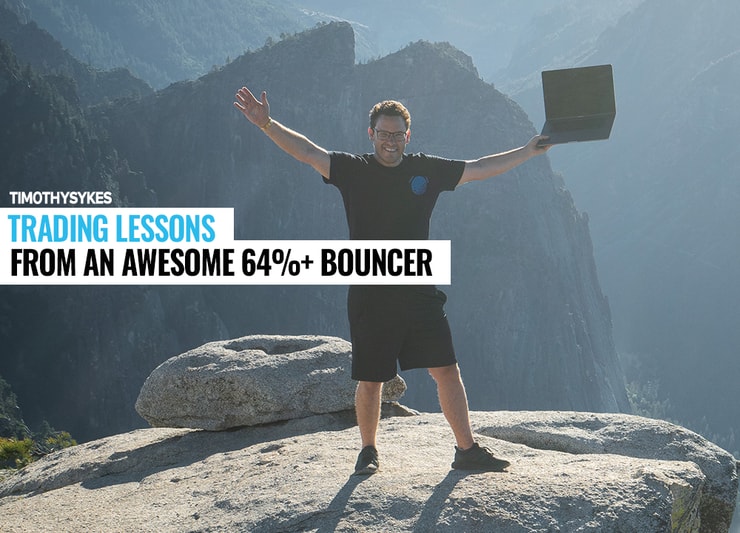







Leave a reply